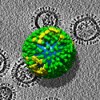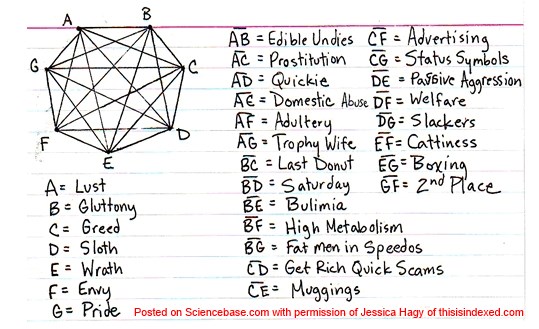 Bees making honey from honeydew rather than nectar produce a sweet material that has greater anti oxidant properties than nectar honey, according to a study of 36 honey samples from Spain with different floral origins. The study published this month in the Journal of the Science of Food and Agriculture could point to a way to improve the health benefits of this natural sweetener.
Bees making honey from honeydew rather than nectar produce a sweet material that has greater anti oxidant properties than nectar honey, according to a study of 36 honey samples from Spain with different floral origins. The study published this month in the Journal of the Science of Food and Agriculture could point to a way to improve the health benefits of this natural sweetener.
The composition of honey depends greatly on where honeybees collect their raw materials. There are two key sources. Honeybees can collect nectar from flowers, and this generates nectar honeys or they can collect fluids exuded by plants, honeydew.
‘Honey is a natural source of antioxidants, and among honeys, honeydew honey is the best,’ says researcher Rosa Ana Pérez, who works at the Instituto Madrileño de Investigación y Desarrollo Rural, Agrario y Alimentario, in Madrid, Spain.
Each of the 36 honeys was exposed to a range of physical and chemical tests. Honeys with high antioxidant properties also had high total polyphenol content, net absorbance, pH and electrical conductivity.
‘These laboratory results show some aspects that people could use to get an idea about which honeys are likely to have the most potent antioxidant properties,’ says Pérez.
Oxidation is a chemical process in which electrons are transferred from from one substance to an oxidizing agent. Antioxidants are basically compounds that slow the rate of oxidation and are as important the chemistry laboratory as they are in the human body. Antioxidants work either by reacting with intermediates and inhibiting the oxidation reaction directly, or themselves reacting with the oxidizing agent and acting as a molecular decoy to prevent the oxidation reaction from occurring.
All living things try to sustain a reducing (the opposite of oxidizing) environment within their cells to prevent damage by oxidation of their biomolecules. Compounds such as glutathione and ascorbic acid (vitamin C) as well as enzymes (peroxidases and oxidoreductases) act as antioxidants. If you do not have adequate levels of antioxidants in your body then oxidative stress and cell damage can occur. More controversial is the notion that supplementing with antioxidants a balanced diet of fruit and vegetables has any additional benefits, claims of anticancer effects and reduced risk of cardiovascular disease have yet to be proved. Indeed, excess of certain antioxidants can do more harm than good.
 If the avian influenza virus, H5N1, ever gets around to mutating into a lethal and virulent form that can be passed on readily from one person to another, then we will be facing a pandemic. Of course, as some observers have pointed out, mainly those without a vested interest in scaremongering, the process of mutation would more than likely lead to a strain of the disease that was not so commonly lethal in people, just as it is not commonly lethal in the natural wild bird hosts.
If the avian influenza virus, H5N1, ever gets around to mutating into a lethal and virulent form that can be passed on readily from one person to another, then we will be facing a pandemic. Of course, as some observers have pointed out, mainly those without a vested interest in scaremongering, the process of mutation would more than likely lead to a strain of the disease that was not so commonly lethal in people, just as it is not commonly lethal in the natural wild bird hosts. People won’t remember your brand if you advertised during a TV show with a lot of sexual content, according to UK researchers, compared to ads that appear in similar programming with no sex.
People won’t remember your brand if you advertised during a TV show with a lot of sexual content, according to UK researchers, compared to ads that appear in similar programming with no sex. According to an article in the New York Times magazine recently, there are nine golden rules of nutrition that in these days of overweight obesics, rising sugar levels, and general all-round fitness collapse, we could all do well to follow. Or, could we?
According to an article in the New York Times magazine recently, there are nine golden rules of nutrition that in these days of overweight obesics, rising sugar levels, and general all-round fitness collapse, we could all do well to follow. Or, could we? Have you ever been stuck for AAA batteries? You know those skinny kid brothers of the AA 1.5 volt you use in your mp3 player? No? Well, this guy obviously has. But, unbelievably what he wasn’t stuck for was a 9V battery and a pair of sharp-nosed pliers. So, with a handful of dead AAAs and no battery store for miles, he hacks open the 9 volter and pulls out six skinnier still unmarked batteries, which he refers to as quadruple A (AAAA) batteries.
Have you ever been stuck for AAA batteries? You know those skinny kid brothers of the AA 1.5 volt you use in your mp3 player? No? Well, this guy obviously has. But, unbelievably what he wasn’t stuck for was a 9V battery and a pair of sharp-nosed pliers. So, with a handful of dead AAAs and no battery store for miles, he hacks open the 9 volter and pulls out six skinnier still unmarked batteries, which he refers to as quadruple A (AAAA) batteries. A plea from a Sciencebase reader asking for more information on new treatments for COPD, chronic obstructive pulmonary disease, led me to do a search to find the specific novel therapy the reader mentioned. Apparently, there was a news item on US TV that referred to research in Mexico.
A plea from a Sciencebase reader asking for more information on new treatments for COPD, chronic obstructive pulmonary disease, led me to do a search to find the specific novel therapy the reader mentioned. Apparently, there was a news item on US TV that referred to research in Mexico. Many of the health claims of herbal medicine bear fruit for the pharmaceutical industry, leading to new drugs that are more potent and more targeted than the original remedy. In Traditional Chinese medicine there are many health claims for the likes of Ginkgo biloba and many other remedies that might bear closer scrutiny. Now, pharmaceutical chemist David Barlow and colleagues Peter Hylands and Thomas Ehrman at King’s College London have undertaken the biggest study yet of the active ingredients in TCM and used an analytical system known as a multiple decision tree technique, called Random Forest, to unearth the root of the activity of the natural products in TCM.
Many of the health claims of herbal medicine bear fruit for the pharmaceutical industry, leading to new drugs that are more potent and more targeted than the original remedy. In Traditional Chinese medicine there are many health claims for the likes of Ginkgo biloba and many other remedies that might bear closer scrutiny. Now, pharmaceutical chemist David Barlow and colleagues Peter Hylands and Thomas Ehrman at King’s College London have undertaken the biggest study yet of the active ingredients in TCM and used an analytical system known as a multiple decision tree technique, called Random Forest, to unearth the root of the activity of the natural products in TCM.

 Everyone who studies any science at school will have come across Newton’s Laws of Motion. His three physical laws explain the relationships between the forces acting on a body and the motion of that body and were first published in 1687 in his magnum opus – Philosophiae Naturalis Principia Mathematica.
Everyone who studies any science at school will have come across Newton’s Laws of Motion. His three physical laws explain the relationships between the forces acting on a body and the motion of that body and were first published in 1687 in his magnum opus – Philosophiae Naturalis Principia Mathematica.